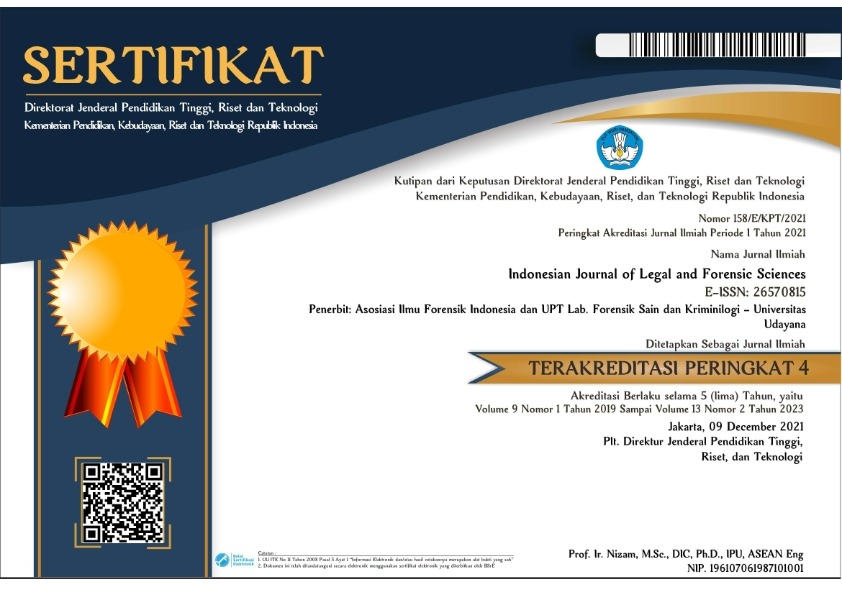Pola Kedatangan Serangga pada Bangkai di Dalam Ruangan sebagai Penunjang Penyelidikan Forensik
DOI:
https://doi.org/10.24843/IJLFS.2025.v15.i01.p06Keywords:
decomposisi, forensik, penyebab kematian, serangga, Decomposition, Forensics, Cause of Death, InsectsAbstract
In forensic science, information regarding identity and time of death is crucial in the legal investigation process. Traditionally, investigators determine the time of death by studying physical, chemical, histological, biochemical, and enzymatic changes that occur in a corpse. However, results obtained through these methods are only relevant within 72 hours after death. One method that can be used for a longer time frame is the observation of insects on the corpse. This study aims to observe the pattern of insect arrival on rabbit carcasses (Oryctolagus cuniculus) with different causes of death. The treatments involved complete and incomplete blood drainage, with the carcasses placed indoors under two conditions: slaughtered and lethally anesthetized. Insect observations were conducted in the morning, noon, and afternoon. The insects that arrived were then grouped according to the decomposition stages. The results showed that insects arriving during the early death to bloating stages belonged to the order Diptera (families Muscidae, Calliphoridae, Culicidae, and Sarcophagidae) and the order Hymenoptera. Specific insects that appeared during the decay stage were from the order Diptera (families Fannidae, Drosophilidae, and Asilidae). In the post-decay stage, the insects observed were from the order Diptera (families Muscidae, Calliphoridae, and Culicidae) and the order Hymenoptera.
Downloads
Published
How to Cite
Issue
Section
License
Copyright (c) 2025 Istiana firqah abid

This work is licensed under a Creative Commons Attribution 4.0 International License.







